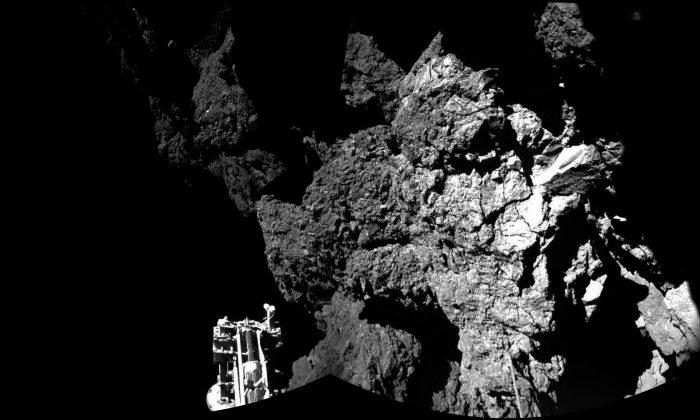$20 Trillion: That’s how much mineral wealth is buried in 3554 Amun, a tiny asteroid that crosses Earth’s orbit, as estimated by planetary scientist John S. Lewis in his 1997 book “Mining the Sky: Untold Riches from the Asteroids, Comets, and Planets.”
Lewis arrived at that figure by multiplying the amount of various minerals stored on Amun with their market prices at the time.
The vast sum wasn’t meant to be taken literally — a sufficient expansion in the supply of rare minerals would send it prices crashing down, just as the discovery of how to cheaply synthesize aluminum, which was once more precious than gold, downgraded it from the cutlery material of choice by European royalty to a pedestrian household good — but was illustrative of the fact that resources scarce on earth were abundant in outer space.
An asteroid lacks a biosphere that accumulates successive layers of terrain on top of each other, and exists in a much cooler state due to the absence of an atmosphere, allowing its mineral deposits to stay relatively close to its surface, and more intact. Especially plentiful on asteroids are the six platinum group metals—the market price for platinum is a few dollars short of a $1,000 per ounce.
“Since the beginning of the sun, these rocks have literally been floating in the solar system, and they haven’t changed much,” said Chris Lewicki, the president of Planetary Resources, a pioneer in the space mining industry.
The declining costs of rockets and advancements in robotic technology have paved the way for companies like Planetary Resources and Deep Space Industries, founded in 2010 and 2013 respectively, and sparked a gold rush for the space age.
The Next Space Race
Just like the Californian and Alaskan gold rushes saw a scramble for the best mining claims in a new territory defined by shaky property rights, the emerging legal and economic framework incentivizes companies to get to the asteroids as fast as possible.
The 1967 Outer Space Treaty, of which the United States is a signatory, forbids nation states from claiming sovereignty on celestial bodies like the moon and asteroids, setting a strong precedent against the sale of asteroid property. However, the treaty was far from comprehensive, and did little to outline how business activities would be conducted in outer space.
The United States has taken the initiative to establish a regulatory regime for outer space commerce, and in May the House passed the Space Resource Exploration and Utilization Act, which would allow companies to keep the minerals they extracted from the asteroids, presumably on a first-come, first-served basis.
It’s no wonder then that space mining companies are charging ahead. Fewer than five years after Planetary Resources opened its doors, the company is already testing its core spacecraft technology in orbit, and the next step is to demonstrate prospecting tools.
We already know much about the content of asteroids through the analysis of meteorite fragments and remote sensing technology used in astronomy. As a third source, prospecting spacecrafts, will be able to fly up close to the asteroids and use infrared imaging to detect for temperature differences and the presence of water.
Platinum isn’t the only thing to be extracted from the asteroids. Water is a valuable resource to mine in outer space simply because it takes a princely sum to send anything into outer space (Lewicki estimates that the cost of sending one ton of water into orbit is $50 million), and it would be much cheaper for astronauts to drink water found on asteroids rather than bottles shipped from earth.
The company is already tinkering with water-extracting methods in their labs, where they experiment with computer simulations of conditions on the asteroids.
“We’ve done modeling and analytical work on how you would extract water by using energy from the sun and heating up asteroid material,” Lewicki said. The frozen ice is heated until it becomes steam, which is then trapped in an enclosed container, all done by remote-controlled robots, similar to the Mars rover.
As novel as asteroid mining may sound, in many ways it’s easier than many space missions that mankind has already accomplished. Landing on the moon and Mars, both of which have powerful gravitational fields, requires a vast expenditure of energy to make a soft landing.
“With asteroids, there’s no gravity,” Lewicki said. “They take a lot less energy to go to and return from. There are thousands of asteroids that are energetically easier to visit than our own moon.”
Unlike other outer space ventures—the colonization of Mars comes to mind—Lewicki stresses that asteroid mining is a pragmatic inevitability; prospecting will start in the next few years, and after that, the mining itself.
“This is something that isn’t going to happen some day in the future, it’s something happening right now,” Lewicki said.






Friends Read Free